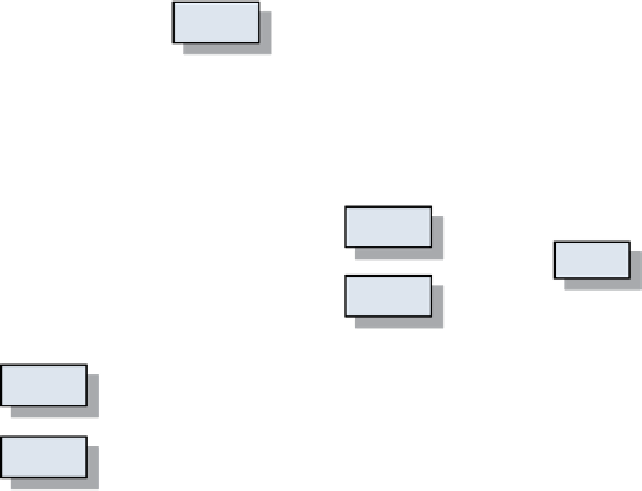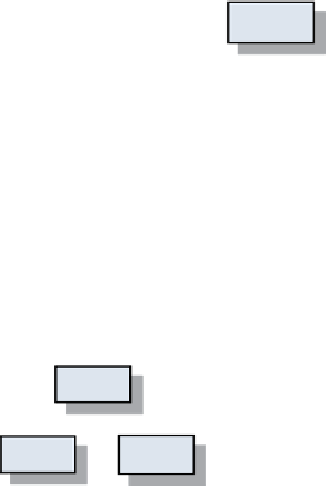Information Technology Reference
In-Depth Information
E
a
E
a
E
a
E
r
(max=
1)
(max=
n)
(b)Unary -
1
(c)Unary -
2
(a)
Aggregation
(d)Unary -3
a_name
E
a
C
E
a
d/o
E
b
(extension)
(e) Isa
(f)Categorization
(h)Element with
attribute
(g)
Generalization
E
a
E
a
G
a
E
r
(max= 1)
(max= n)
E
b
E
b
(i)Group
(l)
Cardinality
-3
(k)Cardinality -2
(j) Cardinality-1
a
E
a
E
a
E
b
E
c
E
r
(min=1)
locationID
locationID
b
c
E
b
G
abc
(max-m:n:n)
(n)Participation -2
(m)Participation-1
(o)Ternay
(q) Element
Reference
(p)Group
Reference
(r)Path
Fig. 2.12
Legends for XSD graph where
a
Sub-element E
r
that is an aggregate element addresses
to two elements for creating a binary relationship in “m:n” cardinality.
b
E
a
that is in “1:1” cardi-
nality addresses to itself for creating u-ary relationship.
c
E
a
that is in “1:n” cardinality addresses to
itself for creating u-ary relationship.
d
E
a
that is in “m:n” cardinality constructs two links address-
ing to the same element for creating u-ary relationship.
e
E
b
with “extension” keyword inherits all
properties of E
a
for showing the “isa” relationship.
f
Sub-element with “c”
circle
that is a subset in
union operation of relational algebra links up with two group elements by using “choice” keyword.
g
Two or more sub-elements with “d” or “o”
circle
can be generalized from element for showing
disjoint or overlap generalization.
h
E
a
represents an element with an attribute declaration.
i
G
a
rep-
resents a group declaration.
j
E
b
is a sub-element belonging to an element E
a
. E
b
is in a “1:1” car-
dinality relationship in connection with E
a
.
k
E
b
is a sub-element belonging to an element E
a
. E
b
is
in a “1:n” cardinality relationship in connection with E
a
.
l
E
r
that is a sub-element addresses to two
elements for creating a “m:n” cardinality relationship.
m
E
b
with “min = 1” keyword that is a sub-
element links up with an element E
a
for showing total participation relationship.
n
E
a
links up with
an element E
b
by a
concrete line with arrow
for showing partial participation relationship.
o
Three
elements named E
a
, E
b
, and E
c
are pointed by a group named G
abc
with “m:n:n” keyword pointed
by an element E
r
for showing “m:n:n” ternary relationship.
p
Broken line with arrow
represents a
“ref” keyword within a group declaration.
q
Concrete line with arrow
represents a “ref” keyword
within an element declaration.
r
Hierarchy path shows one
top
element with two sub-elements














































Search WWH ::

Custom Search